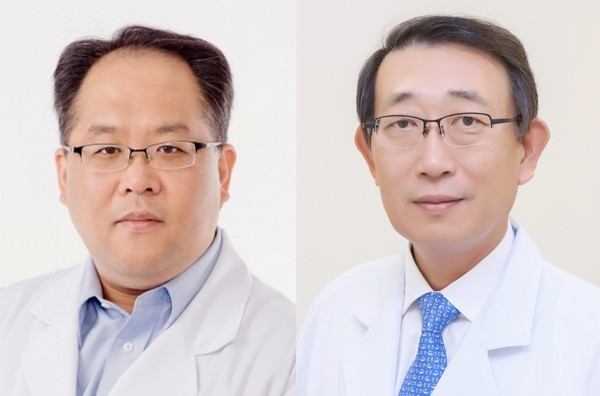Asan Medical Center (AMC) said Thursday that its researchers have developed a technology that can monitor the movement and survival of transplanted stem cells in real-time.

Research on stem cell therapy has become active recently. The treatment has received attention as an alternative therapy method to overcoming incurable diseases without cure. However, there have been limits in developing effective treatments, as mesenchymal stem cells used for stem cell therapy have a low engraftment rate. It is also difficult to understand in vivo dynamics after transplantation.
To resolve this issue, the team, led by Professors Shin Dong-myung of the Department of Biomedical Sciences and Joo Myung-soo of the Department of Urology, developed a technology to observe and quantify the dynamics of mesenchymal stem cells transplanted into interstitial cystitis mice in three dimensions using a two-photon multicolor biomicroscope.
The team directly transplanted stem cells that stably express green fluorescent protein into the bladder of immune-deficient interstitial cystitis mice to check the kinetics of the transplanted stem cells during stem cell treatment.
The researchers also injected red dextran into the eyes of mice to clearly outline the blood vessels.
Afterward, using a two-photon multicolor biomicroscope, the team observed the transplanted stem cells and blood vessels in real-time from the third day to the 28th day of transplantation. It quantified the number, volume, and spherical shape of stem cells.
As a result, the researchers confirmed stem cells were in a non-homogeneous distribution at a distance from the blood vessels in the bladder until the third to fifth day, which is the initial stage of transplantation, and the number gradually decreased after the seventh day.
Most of the engrafted stem cells were near the effective bloodstream supplying oxygen and nutrients.
From the 14th day, the team observed the localization of the transplanted stem cells to the perivascular cells. They also discovered critical factors involved in stem cell engraftment by analyzing engrafted stem cells.
The research team further transplanted stem cells expressing green fluorescent protein to confirm the molecular characteristics of the transplanted stem cells during stem cell treatment, then separated the stem cells by a two-step high-purity cell separation method and analyzed single-cell expression bodies.
A comparative analysis of the obtained single-cell expression body and the gene network of non-transplanted stem cells showed it is possible to determine cell adhesion, extracellular matrix reorganization, and signaling mechanisms related to the cell cycle activated in the transplanted stem cells.
Among the activated mechanisms, the research team discovered the FOS and CDK1 genes, which regulate the engraftment rate of stem cells. It produced mesenchymal stem cells that suppressed the functions of these genes and conducted experiments in vitro and in vivo.
As a result of the in vitro and in vivo experiments, they also found that the migration, proliferation, and anti-inflammatory functions of stem cells, which determine the therapeutic efficacy in vivo, decreased, thus confirming that the FOS and CDK1 genes are key factors that enhance the functionality and engraftment rate of stem cells.
“Through this research, we have secured a technology for observing the engraftment and dynamics of stem cells in a living body in real-time during stem cell treatment and discovered factors that enhance the engraftment rate through high-purity isolation of the engrafted stem cells,” Professor Shin said. “If companies develop an advanced stem cell therapeutics based on this technology, we expect it to increase the possibility of treating intractable diseases.”
The study results were published in the latest issue of Biomaterials.

